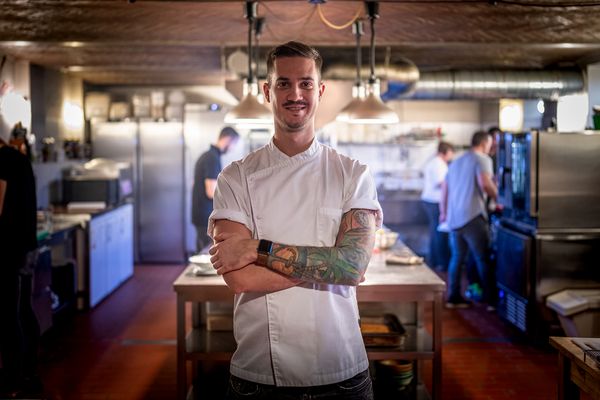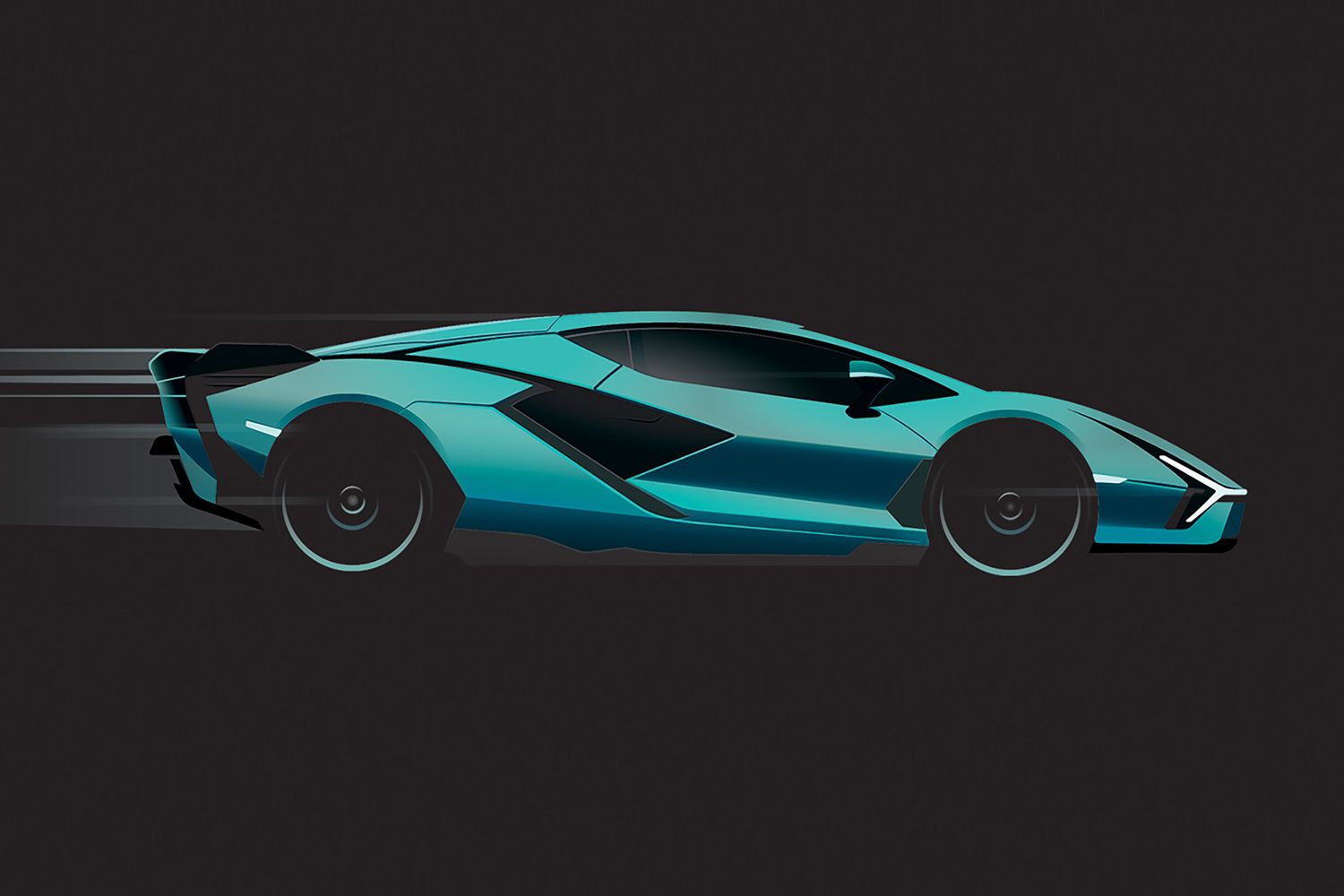“Green is the new gold”, “To stay sustainable, go vegan in materials”, “Sustainable sources = sustainability”—Three major myths that Tereza Nikolova literally burned during her talk at this year’s Brain Bar, the biggest European festival focusing on the future. The Bulgarian-born designer arrived in Budapest from her current headquarters in Turin, Italy, to guide us through the mysteries of future materials. Besides the relationship between sustainability and the everyday objects we use, we also talked with Tereza about her areas of expertise: the automotive industry, Italian design, innovation, and colors. This interview was published in print in Hype&Hyper 2021/2.
Illustration by László Bárdos
Photography by Balázs Csizik

Tereza Nikolova grew up in Silistra, a small town by the Danube in north-eastern Bulgaria. She studied in Milan and then in Turin, and started her career as a freelance graphic designer and later joined an agency as a web designer. During her career, Tereza reached a point where she felt that working in design was no longer a challenge. She started to crave more variety, as well as working on projects with greater impact and where her personality could also be present. When not thinking about solutions for the future, the designer spends her free time on her other two passions: anti-gravity yoga and hiking.
You’re a CMF Designer at Italdesign Giugiaro, best known for its rich history in automobile design. But what does a CMF Designer actually do?
I wish people knew more about our mysterious profession. CMF is short for “Color, Material, Finish”, although sometimes it’s also referred to as “Color and Material” or “Color and Trim” design—all these different names can be confusing, but they all cover the same meaning. CMF is actually a discipline in the areas of industrial design and the automotive industry responsible for the choice of materials and colors used for the exterior and interior of vehicles. When it comes to mass-produced vehicles, car interiors are usually made up of around 100-150 parts—and my job is to determine the colors, materials, and finishes for a combination that works best.
At first glance, this might seem like a simple task, but the reality is, you need to color-coordinate various materials from several different companies. Different types of trim levels also have to be specified, such as choosing between a black or red exterior, different types of textile interiors, and so on. All these factors are decided by a CMF Designer, and in the case of supercars, this also involves the personalization of bespoke car models, where we create special configurations with unique materials and colors specifically tailored to the customer’s wishes. On top of design, we also do research and analyze trends in a number of areas, such as architecture, fashion, art, lifestyle, and then adapt these major, defining trends to the vehicles.
Italy is recognized as being a worldwide trendsetter and leader in design and has produced some of the greatest status symbols of the century. Masters like Giorgetto Giugiaro, Marcello Gandini, and Leonardo Fioravanti became some of the most influential car designers of all time. Now in the age of electric cars, when the vehicle’s performance is more important than style, is Italian design and art heritage still considered essential and a source of inspiration?
Many new companies, such as Tesla, start from scratch, with no design heritage, and basically create their design language from a “blank sheet of paper”. But Italian brands have a rich heritage and can build on it successfully. One of my favorite Italian car models is last year’s Lamborghini Sián Roadster, a limited edition hybrid car. It follows Lamborghini’s distinctive design language beautifully but still has a futuristic feel—a highly complex series, each with its own unique CMF, so no two Sians are the same. It’s a good example of the synergy between heritage and innovation.
The new electric Fiat 500, also known as the Cinquecento, is another standout model among the mass-produced vehicles. It’s from the city I live in—Turin—and the city considers it its own, they really love it. The car’s design remains faithful to its previous version with an internal combustion engine, but it also has many new features, including various audio functions and innovative interior materials. Hopefully, the new electric Fiat 500 will be a commercial hit, and it also deserves success in terms of design.
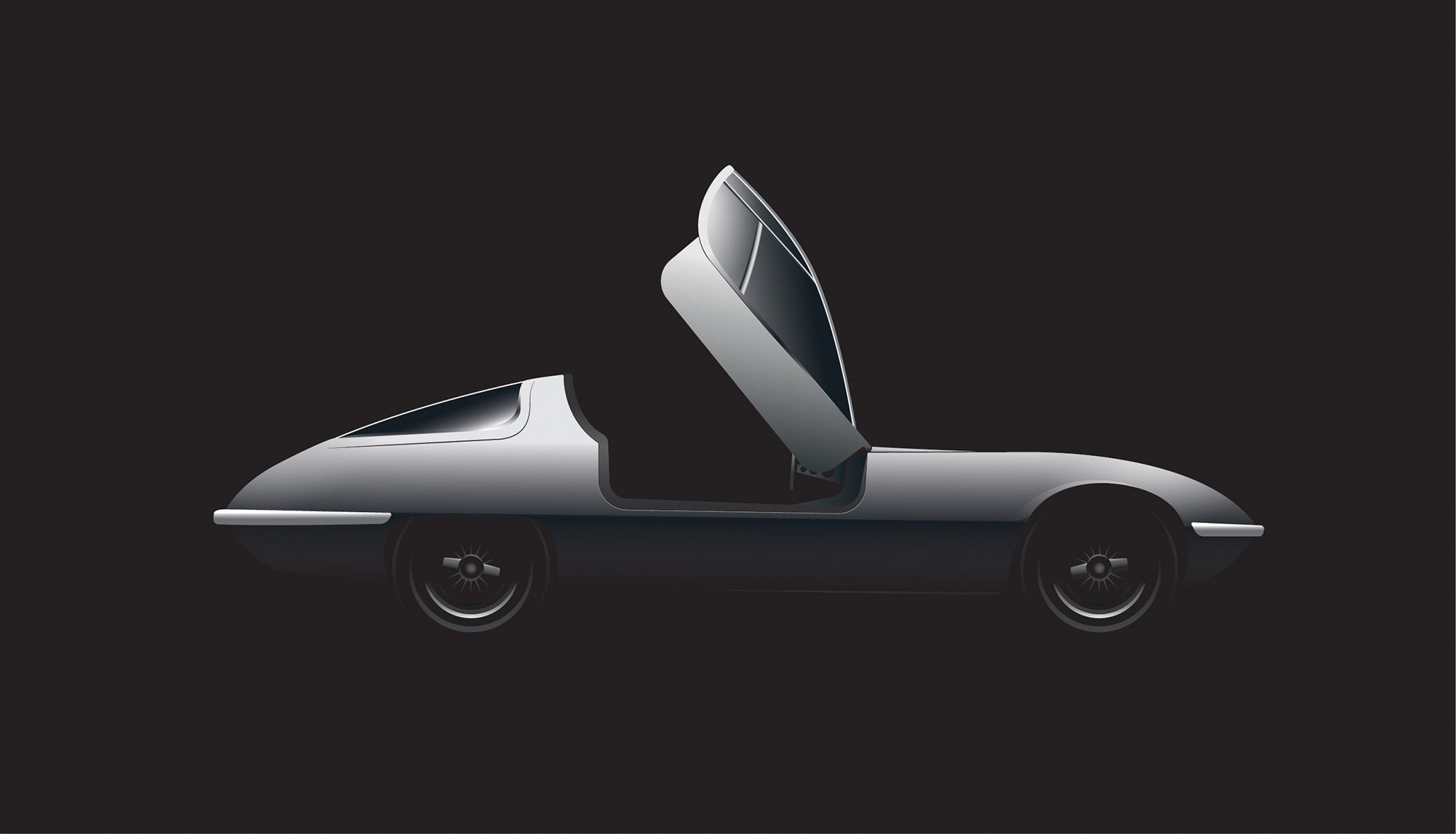
Are there any other iconic vehicles from the past you’d like to highlight?
One of my favorites is the Chevrolet Testudo model, designed by Giorgetto Giugiaro in the 1960s—before he founded Italdesign. It’s such a crazy car! Testudo means turtle in Latin, and the model is inspired by its unique door opening mechanism, a simple and innovative concept. Unfortunately, the Chevrolet Testudo never went into production and exists only as a concept car. It’s part of Giugiaro’s private collection, so it’s really hard to spot on the roads. He was still very young when he designed the car, and it embodies his youthfulness and innovative spirit. For me, Testudo reflects the spirit of the sixties, when excitement was in the air, with space exploration, the moon landing, and new musical trends—it was a period of breaking conventions.
Cars are made of a wide variety of materials, such as steel, glass, copper or special fibers. Which traditional materials are outdated and need to be replaced? What are the key innovative trends and solutions now?
Plastic has become obsolete in the automotive industry, but bioplastics can work as an alternative: they come in different variations and can be produced from different types of biomass, such as grapes, corn, or other agricultural waste. Most bioplastics are biodegradable, but not all of them. However, there are also types of regular plastics made from fossil fuels that are biodegradable. In my opinion, the future is to find bioplastics that meet both criteria: derived from biodegradable biomass in a way that creates a circular economy.

Let’s talk a little bit about the importance of colors as well. When it comes to purchasing a car, color also plays an important factor: many buyers switch from one vehicle brand to another if the model they want is unavailable in their choice of color. Why do you think that color is such a decisive factor, and what color is the most popular now?
The exterior color of a vehicle is the simplest feature owners can decide on when giving their car a personality, and it’s the easiest way to communicate uniqueness and style.
Even though it’s not the most popular choice, green is very on-trend right now. In the automotive field of CMF, green has never been a hit as it is not an easy color to use for a number of reasons. An interesting fact is that unlike other colors, our eyes are capable of distinguishing many shades of green, and a growing number of brands are opting for this color—anything from lime to teal to blueish-green can be found on their palette. Green is both a way of communicating sustainability and the color also represents electric cars, while offering a peace of mind—something that consumers long for in these uncertain times. This is why companies are responding to their needs through the color green.
For example, the new Peugeot 508, unveiled at Milano Monza Motor Show, debuted in a bright green hue. At the same event, a strikingly special blueish-green Alfa Romeo Giulia was exhibited, as well as two other BMW models, one in lime green and the other in deep green. This tendency towards green is also present at Chinese brand Li Auto, which has also reimagined one of its models in a shade of deep green. Green is now everywhere and brands are increasingly using the color. Whenever I think of green in the automotive industry, the line from Robert De Niro in the film Meet the Parents springs to my mind: “They say geniuses pick green, but you didn’t pick it.”
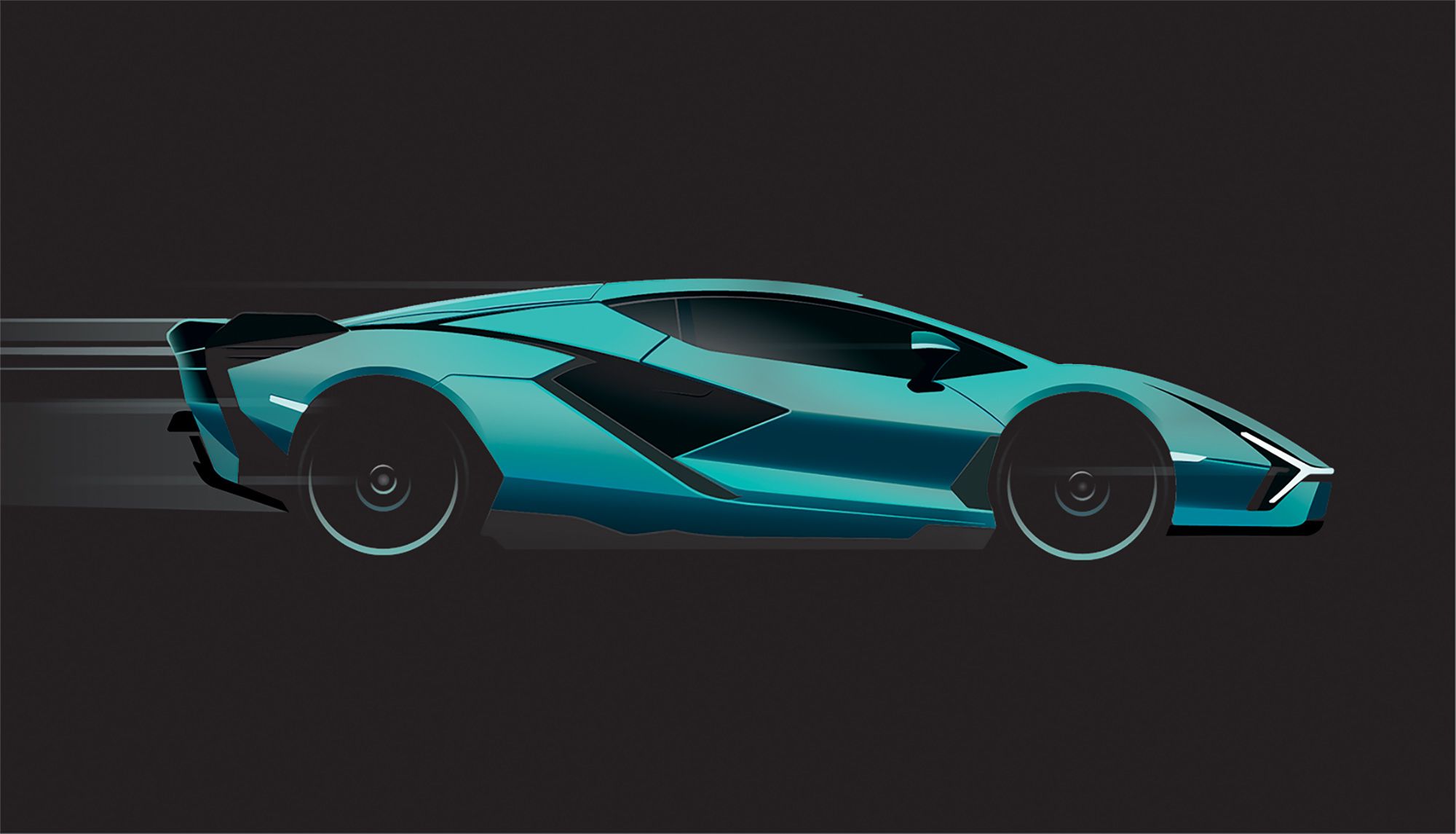
Slowly sustainability has become a strategic priority for the automotive industry. What do you think will be the next big thing or innovation in terms of material use? How will it address sustainability?
I think the next step—which includes sustainability—lies in circular economy and design. Brands shouldn’t be thinking of their products as something that ends up in landfills or will only be partially recycled, instead, they should have circularity in mind from the outset of the design phase. All materials must be either biodegradable, or recyclable so that they can serve other purposes at the end of their life cycle.
If there are no limits: what is the most ideal color and material combination for you in a car? In your opinion, what counts as the perfect car?
I don’t believe the perfect car exists, but if I have to say something, it would be the car that I don’t own. I strongly believe in the sharing economy and new business models built on it. A growing number of car brands are providing these options to drivers—it’s the trend of the future. What’s more, I consider it important for the car’s interior to be made from plant-based materials, and the idea of 3D printed parts excites me as well as it would allow me to customize the shapes and forms as I please. Another important aspect is for a car to be easy to clean, for example by using leather alternatives, from which even ink stains can be easily removed. So all in all, my perfect interior would be bright and always stays clean, while being classy with a sense of freedom.
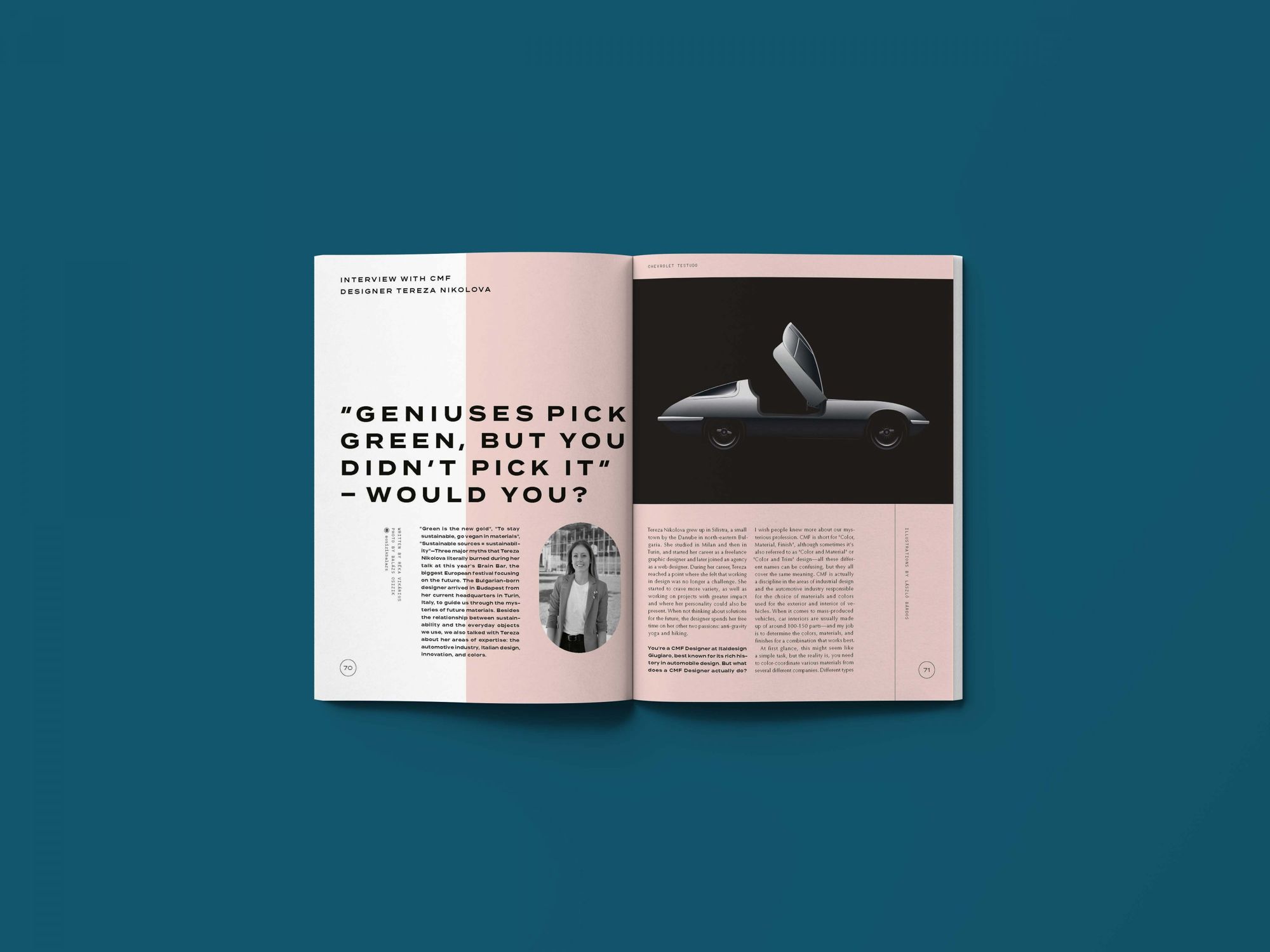
Prefer to read it in print? Order the second issue of Hype&Hyper magazine from our online Store!
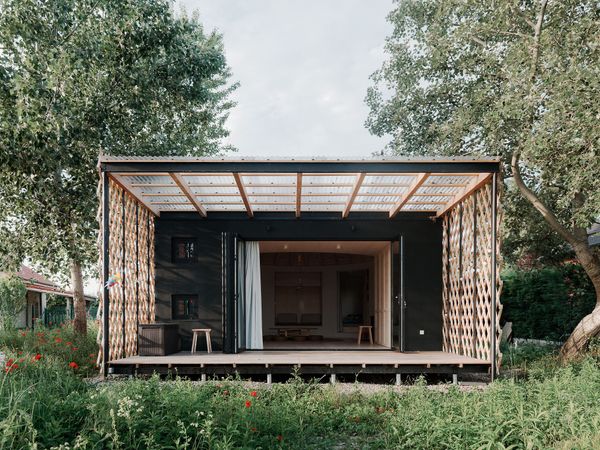
Modern yurt house as a creative studio | JRKVC

Like a local #3—Naspolya Nassolda, Szír Center, ONO Poké Bowl
